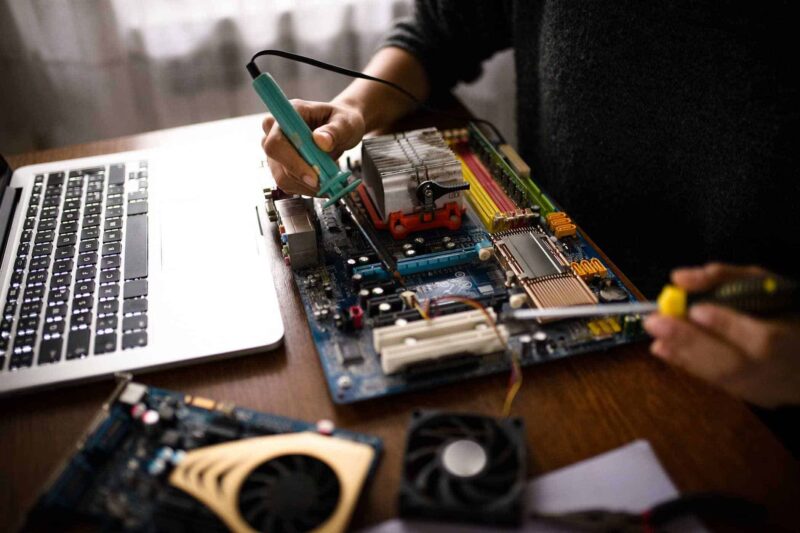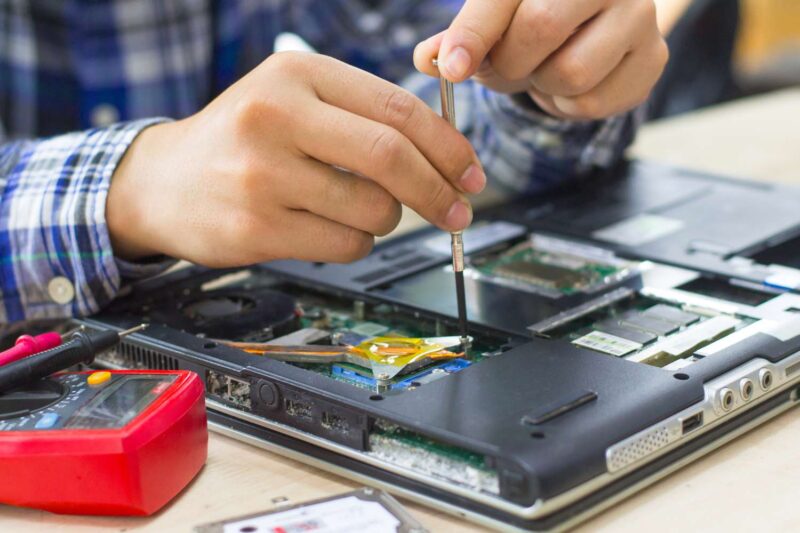The Golden Rule of Computer Repair: DIY vs. Professional Assistance
Computer repair plays a crucial role in our increasingly digital lives. From work to entertainment, we rely on our computers for various tasks. But what happens when our trusty machines encounter issues? That’s where the golden rule of computer repair comes into play: deciding whether to tackle the problem ourselves or seek professional assistance. In this blog post, we’ll explore the pros and cons of DIY computer repair versus professional help. By understanding the considerations involved, we can make informed decisions and ensure our computers are up and running smoothly.
DIY Computer Repair: Pros, Cons, and Considerations

DIY computer repair offers several advantages. It empowers users to take control of their technology, fostering a sense of self-reliance. Additionally, DIY repairs can save time and money, especially for minor issues. However, there are downsides to consider. Not all computer problems are easily solvable without professional expertise. Attempting complex rehabilitation without proper knowledge and skills can lead to further damage. Moreover, DIY repairs can be time-consuming, requiring research and troubleshooting. It’s essential to evaluate the complexity of the issue and our own capabilities before diving into a DIY restoration project. When facing challenging technical problems, it’s wise to consider seeking professional assistance from experts in computer repair in Raleigh, NC, who can provide the necessary expertise and guidance.
Common Computer Issues: Identifying Problems Suitable for DIY Repair
Certain computer issues are well-suited for DIY repair. Problems like software glitches, slow performance, or minor hardware malfunctions can often be resolved with basic troubleshooting. Conducting a virus scan, updating software, or reinstalling drivers are examples of tasks within the DIY realm. However, it’s crucial to remember that not all problems are straightforward. Complex hardware failures, such as a faulty motherboard or a broken screen, are best left to professionals. Recognizing the boundaries of our expertise is key to ensuring successful restorations and avoiding potential complications.
Hardware Repair: When to Seek Professional Assistance

When it comes to hardware repair, there’s a fine line between what can be fixed with DIY methods and what requires professional intervention. While replacing a hard drive or adding RAM modules may be feasible for some users, more intricate tasks like soldering components or diagnosing circuitry issues demand specialized knowledge. Without the necessary expertise, attempting complex hardware restorations can worsen the problem and void warranties. To ensure optimal results and avoid unnecessary risks, it’s prudent to consult a professional when faced with intricate hardware repairs.
Software Troubleshooting: DIY Techniques for Common Software Glitches
Software issues can be particularly frustrating, but they often lend themselves well to DIY troubleshooting. Many common problems can be resolved through simple steps. Restarting the computer, updating software, or performing system restores can often rectify issues like freezing or crashing programs. Additionally, online resources such as tutorials and forums offer valuable guidance for DIY software rehabilitation. However, it’s important to exercise caution, as improper modifications or changes to critical system files can lead to further complications. Always back up important data before attempting any software troubleshooting.
Data Recovery: DIY Methods vs. Professional Data Recovery Services

Data loss can be a nightmare, whether it’s due to accidental deletion, hardware failure, or malware. In some cases, DIY data recovery methods can be successful. Software tools can often retrieve deleted files or recover data from formatted drives. However, data recovery has its limitations. For physically damaged drives or complex scenarios, professional data recovery services are recommended. These specialists possess the necessary expertise, tools, and cleanroom environments to salvage data effectively. Remember, data is often irreplaceable, so it’s wise to seek professional assistance when dealing with critical data loss situations.
Time and Cost Factors: Weighing the DIY Approach Against Professional Help
Time and cost considerations play a crucial role in deciding between DIY computer rehabilitation and professional assistance. DIY repairs can be time-consuming, requiring research, trial and error, and potential setbacks. On the other hand, professional services offer efficiency and expertise, which can save valuable time. Cost-wise, minor restorations are usually more affordable than these projects, but complex issues may require specialized tools or parts, making professional assistance a more cost-effective option. Weighing the value of our time, the complexity of the problem, and the associated costs helps us determine the best course of action.
Online Resources: Utilizing Tutorials and Forums for DIY Repairs
The internet is a treasure trove of information for computer restorations. Tutorials, forums, and online communities offer step-by-step guides and advice for troubleshooting various issues. These resources can be invaluable for users seeking to fix minor problems themselves. However, it’s crucial to exercise caution and verify the reliability of the information found online. Consider consulting multiple sources and reputable websites to ensure accuracy. Additionally, forums provide a platform to seek assistance from experienced individuals who have encountered similar problems. Utilizing online resources effectively enhances our ability to tackle DIY computer restorations.
Warranty and Insurance: Implications for DIY Repairs and Professional Assistance

When considering computer repairs, it’s essential to consider the implications for warranties and insurance coverage. These repairs may void warranties, leaving users responsible for any further damage or expenses. Manufacturers often require authorized service centers to handle restorations to ensure compliance with warranty terms. Similarly, insurance policies may require professional assessment and rehabilitation to validate claims related to accidental damage or theft. Before embarking on a restoration, carefully review warranty and insurance terms to make an informed decision that protects your investment and mitigates potential risks.
Expertise and Skill Level: Assessing Personal Capabilities for DIY Repairs
Assessing our expertise and skill level is crucial before undertaking computer repairs. Basic troubleshooting and software fixes are relatively accessible to most users. However, it’s important to recognize our limitations and know when to seek professional help. Attempting restorations beyond our skill level can lead to further damage and frustration. Consider your comfort level with technology, previous experience with computer repairs, and the complexity of the issue at hand. When in doubt, consult experts or seek guidance from online communities to evaluate your capabilities accurately.
Conclusion: Making Informed Decisions for Computer Repairs Based on the Golden Rule
The golden rule of computer repair is about making informed decisions that strike a balance between DIY repairs and professional assistance. By understanding the pros, cons, and considerations of each approach, we can navigate the world of computer rehabilitation with confidence. Recognizing our own capabilities and the complexity of the problem is crucial. While DIY restorations offer empowerment and cost savings for minor issues, seeking professional help ensures efficient resolution of complex problems and safeguards against potential risks. Ultimately, the golden rule reminds us to approach computer restorations with wisdom, ensuring optimal outcomes for our precious devices.



